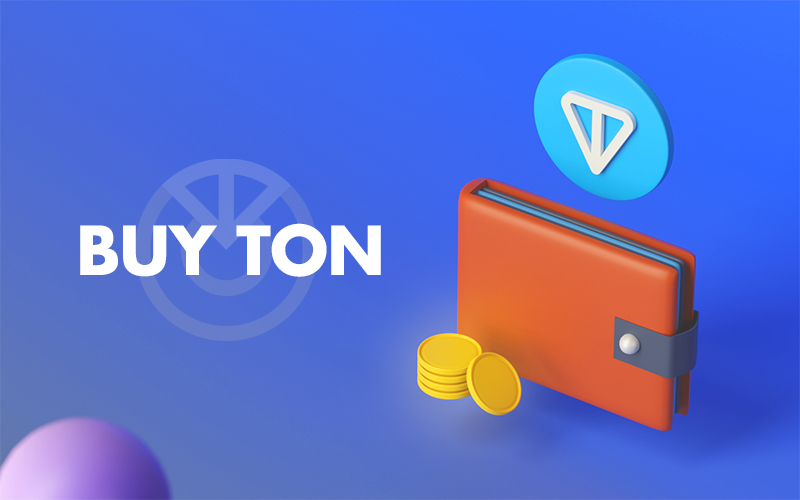Welcome to the beginner’s guide to The Open Network (TON), an innovative blockchain project that has garnered significant attention in the world of cryptocurrencies and decentralized systems. This article will look closely at TON and explore its key concepts, features, and potential impact on the blockchain landscape.
What is TON?
TON, short for The Open Network, is a blockchain-based decentralized computer network technology. Initially developed by the Telegram team, TON aimed to create a robust and scalable blockchain platform. It was launched in 2018 but faced a temporary halt before resuming its activities under the TON Foundation and rebranding from Telegram Open Network to The Open Network.
TON operates as a Layer 1 blockchain, similar to other popular blockchain networks like Solana and Ethereum. It utilizes a proof-of-stake (PoS) consensus mechanism, where nodes in the network become validators by staking Toncoin. Validators are responsible for securing the network and validating transactions. As a reward for their participation, validators receive Toncoin.
The TON ecosystem is designed to meet the needs of millions of users, with a particular focus on serving regular users. It emphasizes efficiency, speed, and scalability, aiming to provide a user-friendly and accessible experience.
It’s important to note that in May 2020, Telegram withdrew from the TON project following legal disputes with the US Securities and Exchange Commission. However, the technology and vision behind TON continue to shape the development of blockchain and decentralized networks.
How TON Works
TON operates through a combination of unique architectural elements and consensus mechanisms to provide fast, scalable, and secure transaction processing. Let’s explore how TON works at a high level.
Architecture
TON is structured as a multi-layered network comprising the masterchain, workchains, and shardchains. The masterchain acts as the central coordinator and manages validator nodes, staked assets, and the synchronization of different components within the network. Workchains are independent blockchains supporting smart contracts and decentralized applications (DApps). Within each workchain, shardchains are implemented to enhance scalability and parallelize transaction processing.
TON Virtual Machine (TVM)
The TON Virtual Machine (TVM) provides a secure and isolated environment for executing smart contracts on the network. It ensures contracts run consistently across all nodes and provides the necessary computational resources to execute complex operations. TVM plays a crucial role in enforcing the predefined rules and logic embedded within smart contracts.
Consensus Mechanism
TON utilizes a Byzantine Fault Tolerant (BFT) consensus mechanism called the Block-Proof of Stake (BPoS) consensus. Validators, who hold and stake TON’s native cryptocurrency, participate in block validation and consensus. The BPoS consensus ensures that a supermajority of honest validators is required for block confirmation, enhancing the network’s security and resistance to malicious attacks.
Sharding
Sharding is a key component of TON’s scalability strategy. Each Workchain divides into multiple Shardchains, which process transactions in parallel. By distributing the transaction workload across multiple Shardchains, TON can achieve higher throughput and scalability. Shardchains maintain a subset of the global state, enabling efficient processing of transactions without requiring every node to process every transaction.
Smart Contracts and dApps
Workchains within TON support smart contracts, which are self-executing agreements with predefined rules and conditions. Developers can build decentralized applications (DApps) on top of TON using smart contracts. These DApps can enable various functionalities, such as decentralized finance (DeFi), gaming, social media, and more. The flexible design of Workchains allows for customization and innovation in DApp development.
Interoperability and Cross-Chain Communication
TON facilitates interoperability and cross-chain communication between different Workchains and Shardchains. This enables seamless asset transfers and transaction execution across various chains within the TON network. Interoperability opens up possibilities for collaboration between DApps and the exchange of assets and data, enhancing the overall ecosystem and user experience.
Speed and Efficiency
TON is designed to process transactions with high speed and efficiency. The combination of sharding, parallel processing, and the BFT consensus mechanism allows for a high throughput of transactions, ensuring fast confirmation times. This speed and efficiency are critical for TON to support real-world applications and handle a large number of transactions while maintaining network integrity.
Security and Decentralization
TON prioritizes security by employing robust consensus mechanisms, cryptographic techniques, and network validation. The decentralized nature of TON, with validator nodes distributed across the network, ensures resilience against attacks and censorship. The network’s architecture and consensus mechanism enable a high degree of decentralization while maintaining the integrity and security of transactions and smart contracts. By leveraging the power of decentralization, consensus mechanisms, sharding, smart contracts, and a dedicated virtual machine, TON aims to create a robust and scalable network capable of supporting a wide range of decentralized applications and services. It’s important to note that while the original TON project by Telegram faced challenges, other projects and communities have taken up the development and exploration of TON technology, building upon its principles to create innovative blockchain solutions.
TON Services
TON Wallets
TON wallets are digital wallets specifically designed for storing, managing, and transacting with the native cryptocurrency of the TON (The Open Network) ecosystem, known as Toncoin (TON). These wallets provide users with a secure and convenient way to interact with the TON blockchain and participate in various activities within the network.
Several types of TON wallets are available, including non-custodial and custodial wallets. Non-custodial or self-custody wallets give users complete control over their funds and private keys. This means that users are solely responsible for the security and management of their wallets and assets. On the other hand, there are custodial wallets managed by a third-party service provider who holds the users’ funds and private keys on their behalf, offering convenience but potentially reducing the level of control.
One popular non-custodial TON wallet is Tonkeeper. Tonkeeper provides users with a decentralized and secure way to store and manage their Toncoin holdings. It offers features such as an intuitive interface, support for interacting with decentralized TON applications, and the ability to buy, sell, and exchange Toncoin directly within the wallet.
Another notable non-custodial wallet is Tonhub, developed by the TON Whales team. Tonhub stands out with its sleek design and additional features like Toncoin staking and the Token Builder, which allows users to create their own cryptocurrency based on TON. These features make Tonhub an attractive option for those looking to participate in the TON ecosystem actively.
TON Wallet suits users seeking a more straightforward wallet for basic coin transfers. With its simple design and limited functionality, TON Wallet focuses on providing a user-friendly experience for storing and sending Toncoin to other users.
If you prefer a custodial wallet, @wallet is an option worth considering. @wallet is integrated directly into the Telegram messaging app, providing a convenient and seamless way to manage your crypto assets without leaving the familiar Telegram interface. While custodial wallets may offer greater ease of use, it’s important to note that users do not have direct control over their private keys and must rely on the custodian to secure their funds.
It’s important to exercise caution and practice proper security measures when using any wallet. This includes downloading wallets from official and trusted sources, safeguarding your private keys or seed phrases, and regularly updating your wallet software to ensure you have the latest security features and bug fixes.
TON Storage
TON Storage allows users to store data and information on the blockchain. It provides a decentralized storage solution similar to services like Dropbox but with the added advantage of private encryption using the user’s wallet’s private key.
TON Sites
TON Sites allow users to launch web servers and make their websites available on the TON network. It enables website owners to have decentralized, secure, and reliable websites accessible via the TON network.
TON WWW
TON WWW refers to the collection of web pages and services on the TON network. It includes websites accessible via the TON network and can be accessed through a TON crypto wallet and web browser. TON WWW utilizes TON Proxy and TON Sites to create a decentralized and secure browsing experience. TON Proxy TON Proxy is a technology that enables users to connect to the TON network. This service aims to combat censorship and provide easy access to decentralized applications (dApps). It is an entry point to access the TON network and allows browsing and interacting with TON Sites. You can set up TON Proxy in browsers or integrate it into TON wallet apps, allowing users to access TON Sites seamlessly.
Smart Contracts
TON utilizes smart contracts for faster transaction processing, similar to many other blockchain networks. All smart contracts on the TON blockchain are executed by the TON Virtual Machine (TVM).
TON DNS
TON DNS is a service designed to make crypto wallets, accounts, smart contracts, and other services more user-friendly. It aims to simplify the addressing and accessibility of various resources on the TON network.
Ton Bridge
Ton Bridge facilitates the conversion of TON coins between the Binance Smart Chain, Ethereum, and The Open Network. It allows users to transfer TON tokens seamlessly between different blockchain networks.
Conclusion
Despite facing challenges along the way, TON has played a significant role in inspiring innovation and driving the development of the blockchain industry, providing a platform for the growth and advancement of decentralized applications and services.




